
Jan van Eyck Painting Reproductions 2 of 2
b.1395-1441
Netherlandish Northern Renaissance Painter
Jan van Eyck or Johannes de Eyck (before c. 1395 . before July 9, 1441) was an Early Netherlandish painter active in Bruges and considered one of the best Northern European painters of the 15th century.
There is a common misconception, which dates back to the sixteenth-century writings of the Tuscan historiographer Giorgio Vasari, that Jan van Eyck invented oil painting. It is however true that he achieved, or perfected, new and remarkable effects using this technique.
Jan van Eyck has often been linked as brother to painter and peer Hubert van Eyck, because both have been thought to originate from the same town, Maaseik in Limburg (Belgium). Another brother, Lambert van Eyck is mentioned in Burgundian court documents, and there is a conjecture that he too was a painter, and that he may have overseen the closing of Jan van Eyck's Bruges workshop. Another significant, and rather younger, painter who worked in Southern France, Barthelemy van Eyck, is presumed to be a relation.
Youth
The date of van Eyck's birth is not known. The first extant record of van Eyck is from the court of John of Bavaria at The Hague. It dates to 1422 and mentions a payment to Jan van Eyck as court painter, which indicates he had to have been born no later than 1395, and indeed probably earlier. His apparent age in his probable self-portrait suggests to most scholars an earlier date than 1395.
Worldly success
Following the death of John of Bavaria, in 1425 van Eyck entered the service of the powerful and influential Valois prince, Duke Philip the Good of Burgundy. Van Eyck resided in Lille for a year and then moved to Bruges, where he lived until his death in 1441. A number of documents published in the twentieth century record his activities in Philip's service. He was sent on several missions on behalf of the Duke, and worked on several projects which likely entailed more than painting. With the exception of two portraits of Isabella of Portugal, which van Eyck painted on Philip's behest as a member of a 1428-9 delegation to seek her hand, the precise nature of these works is obscure.
As a painter and "valet de chambre" to the Duke, Jan van Eyck was exceptionally well paid. His annual salary was quite high when he was first engaged, but it doubled twice in the first few years, and was often supplemented by special bonuses. His salary alone makes Jan van Eyck an exceptional figure among early Netherlandish painters, since most of them depended on individual commissions for their livelihoods. An indication that Van Eyck's art and person were held in extraordinarily high regard is a document from 1435 in which the Duke scolded his treasurers for not paying the painter his salary, arguing that Van Eyck would leave and that he would nowhere be able to find his equal in his "art and science." The Duke also served as godfather to one of Van Eyck's children, supported his widow upon the painter's death, and years later helped one of his daughters with the funds required to enter a convent.
Masterworks
Jan van Eyck produced paintings for private clients in addition to his work at the court. Foremost among these is the Ghent Altarpiece painted for Jodocus Vijdts and his wife Elisabeth Borluut. Started sometime before 1426 and completed, at least partially, by 1432, this polyptych has been seen to represent "the final conquest of reality in the North", differing from the great works of the Early Renaissance in Italy by virtue of its willingness to forgo classical idealization in favor of the faithful observation of nature. It is housed in its original location, the Cathedral of St. Bavo in Ghent, Belgium. It has had a turbulent history, surviving the 16th-century iconoclastic riots, the French Revolution, changing tastes which led to its dissemination, and most recently Nazi looting. When World War II ended it was recovered in a salt mine, and the story of its restoration drew considerable interest from the general public and greatly advanced the discipline of the scientific study of paintings. No less turbulent was the history of the interpretation of this work. Since an inscription states that Hubert van Eyck maior quo nemo repertus (greater than anyone) started the altarpiece, but that Jan van Eyck - calling himself arte secundus (second best in the art) - finished it identifies it as a collaborative effort of Jan van Eyck and his brother Hubert. The question of who painted what, or "Jan or Hubert?" has become a mythical one among art historians. Some even question the validity of the inscription, and thus Hubert van Eyck's involvement. In the 1930s, Emil Renders even argued that "Hubert van Eyck" was a complete fiction invented by Ghent humanists in the 16th century. More recently, Lotte Brand Philip (1971) has proposed that the Ghent Altarpiece's inscription has been misread, and that Hubert was (in Latin) the "fictor," not the "pictor," of the work. She interprets this as meaning that Jan van Eyck painted the entire altarpiece, while his brother Hubert created its sculptural framework.
Exceptionally for his time, van Eyck often signed and dated his paintings on their frames, then considered an integral part of the work (the two were often painted together). However, in the celebrated Arnolfini Portrait (London, National Gallery), van Eyck inscribed on the (pictorial) back wall above the convex mirror "Johannes de Eyck fuit hic 1434" (Jan van Eyck was here, 1434). The painting is one of the most frequently analyzed by art historians, but in recent years a number of popular interpretations have been questioned. This is probably not a painted marriage certificate, or the record of a betrothal, as originally suggested by Erwin Panofsky. The woman is probably also not pregnant, as the hand-gesture of lifting the dress recurs in contemporary renditions of virgin saints (including Jan van Eyck's own Dresden Triptych and a workshop piece, the Frick Madonna).
Other works
Other works include two remarkable commemorative panels, the Madonna with Chancellor Rolin (Paris, Louvre), and the Madonna of Canon Georg van der Paele (Bruges, Groeninge Museum), some other religious paintings, notably the Annunciation (Washington, National Gallery of Art), and a number of exceptionally haunting portraits, including that of his wife, Margareta (Bruges, Groeningemuseum), and what is believed to be his self-portrait, Portrait of a Man (Self Portrait?), often mistitled Portrait of a Man in a Red Turban, as in fact he wears a chaperon. Many more works are disputed, or believed to be by his assistants or followers.
Reputation
In the most substantial early source on him, a 1454 biography by the Genoese humanist Bartolomeo Facio (De viris illustribus), Jan van Eyck was named "the leading painter" of his day. Facio places him among the best artists of the early 15th century, along with Rogier van der Weyden, Gentile da Fabriano, and Pisanello. It is particularly interesting that Facio shows as much enthusiasm for Netherlandish painters as he does for Italian painters. This text also sheds light on aspects of Jan van Eyck's production now lost, citing a bathing scene as well as a world map which van Eyck painted for Philip the Good. Facio also recorded that van Eyck was a learned man, and that he was versed in the classics, particularly the writings of Pliny the Elder about painting. This is supported by records of an inscription from Ovid's Ars Amatoria, which was on the now-lost original frame of the Arnolfini Double Portrait, and by the many Latin inscriptions on his paintings, using the Roman alphabet, then reserved for educated men. Jan van Eyck likely had some knowledge of Latin for his many missions abroad on behalf of the Duke.
Jan van Eyck died in Bruges in 1441 and was buried there in the Church of St Donatian (destroyed during the French Revolution).
There is a common misconception, which dates back to the sixteenth-century writings of the Tuscan historiographer Giorgio Vasari, that Jan van Eyck invented oil painting. It is however true that he achieved, or perfected, new and remarkable effects using this technique.
Jan van Eyck has often been linked as brother to painter and peer Hubert van Eyck, because both have been thought to originate from the same town, Maaseik in Limburg (Belgium). Another brother, Lambert van Eyck is mentioned in Burgundian court documents, and there is a conjecture that he too was a painter, and that he may have overseen the closing of Jan van Eyck's Bruges workshop. Another significant, and rather younger, painter who worked in Southern France, Barthelemy van Eyck, is presumed to be a relation.
Youth
The date of van Eyck's birth is not known. The first extant record of van Eyck is from the court of John of Bavaria at The Hague. It dates to 1422 and mentions a payment to Jan van Eyck as court painter, which indicates he had to have been born no later than 1395, and indeed probably earlier. His apparent age in his probable self-portrait suggests to most scholars an earlier date than 1395.
Worldly success
Following the death of John of Bavaria, in 1425 van Eyck entered the service of the powerful and influential Valois prince, Duke Philip the Good of Burgundy. Van Eyck resided in Lille for a year and then moved to Bruges, where he lived until his death in 1441. A number of documents published in the twentieth century record his activities in Philip's service. He was sent on several missions on behalf of the Duke, and worked on several projects which likely entailed more than painting. With the exception of two portraits of Isabella of Portugal, which van Eyck painted on Philip's behest as a member of a 1428-9 delegation to seek her hand, the precise nature of these works is obscure.
As a painter and "valet de chambre" to the Duke, Jan van Eyck was exceptionally well paid. His annual salary was quite high when he was first engaged, but it doubled twice in the first few years, and was often supplemented by special bonuses. His salary alone makes Jan van Eyck an exceptional figure among early Netherlandish painters, since most of them depended on individual commissions for their livelihoods. An indication that Van Eyck's art and person were held in extraordinarily high regard is a document from 1435 in which the Duke scolded his treasurers for not paying the painter his salary, arguing that Van Eyck would leave and that he would nowhere be able to find his equal in his "art and science." The Duke also served as godfather to one of Van Eyck's children, supported his widow upon the painter's death, and years later helped one of his daughters with the funds required to enter a convent.
Masterworks
Jan van Eyck produced paintings for private clients in addition to his work at the court. Foremost among these is the Ghent Altarpiece painted for Jodocus Vijdts and his wife Elisabeth Borluut. Started sometime before 1426 and completed, at least partially, by 1432, this polyptych has been seen to represent "the final conquest of reality in the North", differing from the great works of the Early Renaissance in Italy by virtue of its willingness to forgo classical idealization in favor of the faithful observation of nature. It is housed in its original location, the Cathedral of St. Bavo in Ghent, Belgium. It has had a turbulent history, surviving the 16th-century iconoclastic riots, the French Revolution, changing tastes which led to its dissemination, and most recently Nazi looting. When World War II ended it was recovered in a salt mine, and the story of its restoration drew considerable interest from the general public and greatly advanced the discipline of the scientific study of paintings. No less turbulent was the history of the interpretation of this work. Since an inscription states that Hubert van Eyck maior quo nemo repertus (greater than anyone) started the altarpiece, but that Jan van Eyck - calling himself arte secundus (second best in the art) - finished it identifies it as a collaborative effort of Jan van Eyck and his brother Hubert. The question of who painted what, or "Jan or Hubert?" has become a mythical one among art historians. Some even question the validity of the inscription, and thus Hubert van Eyck's involvement. In the 1930s, Emil Renders even argued that "Hubert van Eyck" was a complete fiction invented by Ghent humanists in the 16th century. More recently, Lotte Brand Philip (1971) has proposed that the Ghent Altarpiece's inscription has been misread, and that Hubert was (in Latin) the "fictor," not the "pictor," of the work. She interprets this as meaning that Jan van Eyck painted the entire altarpiece, while his brother Hubert created its sculptural framework.
Exceptionally for his time, van Eyck often signed and dated his paintings on their frames, then considered an integral part of the work (the two were often painted together). However, in the celebrated Arnolfini Portrait (London, National Gallery), van Eyck inscribed on the (pictorial) back wall above the convex mirror "Johannes de Eyck fuit hic 1434" (Jan van Eyck was here, 1434). The painting is one of the most frequently analyzed by art historians, but in recent years a number of popular interpretations have been questioned. This is probably not a painted marriage certificate, or the record of a betrothal, as originally suggested by Erwin Panofsky. The woman is probably also not pregnant, as the hand-gesture of lifting the dress recurs in contemporary renditions of virgin saints (including Jan van Eyck's own Dresden Triptych and a workshop piece, the Frick Madonna).
Other works
Other works include two remarkable commemorative panels, the Madonna with Chancellor Rolin (Paris, Louvre), and the Madonna of Canon Georg van der Paele (Bruges, Groeninge Museum), some other religious paintings, notably the Annunciation (Washington, National Gallery of Art), and a number of exceptionally haunting portraits, including that of his wife, Margareta (Bruges, Groeningemuseum), and what is believed to be his self-portrait, Portrait of a Man (Self Portrait?), often mistitled Portrait of a Man in a Red Turban, as in fact he wears a chaperon. Many more works are disputed, or believed to be by his assistants or followers.
Reputation
In the most substantial early source on him, a 1454 biography by the Genoese humanist Bartolomeo Facio (De viris illustribus), Jan van Eyck was named "the leading painter" of his day. Facio places him among the best artists of the early 15th century, along with Rogier van der Weyden, Gentile da Fabriano, and Pisanello. It is particularly interesting that Facio shows as much enthusiasm for Netherlandish painters as he does for Italian painters. This text also sheds light on aspects of Jan van Eyck's production now lost, citing a bathing scene as well as a world map which van Eyck painted for Philip the Good. Facio also recorded that van Eyck was a learned man, and that he was versed in the classics, particularly the writings of Pliny the Elder about painting. This is supported by records of an inscription from Ovid's Ars Amatoria, which was on the now-lost original frame of the Arnolfini Double Portrait, and by the many Latin inscriptions on his paintings, using the Roman alphabet, then reserved for educated men. Jan van Eyck likely had some knowledge of Latin for his many missions abroad on behalf of the Duke.
Jan van Eyck died in Bruges in 1441 and was buried there in the Church of St Donatian (destroyed during the French Revolution).
42 Jan van Eyck Paintings

The Knights of Christ (The Ghent Altarpiece) 1432
Oil Painting
$6494
$6494
Canvas Print
$54.62
$54.62
SKU: EJV-7861
Jan van Eyck
Original Size: unknown
Saint Bavo Cathedral, Ghent, Belgium
Jan van Eyck
Original Size: unknown
Saint Bavo Cathedral, Ghent, Belgium

The Hermits (The Ghent Altarpiece) 1432
Oil Painting
$4646
$4646
Canvas Print
$54.62
$54.62
SKU: EJV-7862
Jan van Eyck
Original Size: unknown
Saint Bavo Cathedral, Ghent, Belgium
Jan van Eyck
Original Size: unknown
Saint Bavo Cathedral, Ghent, Belgium

The Pilgrims (The Ghent Altarpiece) 1432
Oil Painting
$4392
$4392
Canvas Print
$54.62
$54.62
SKU: EJV-7863
Jan van Eyck
Original Size: unknown
Saint Bavo Cathedral, Ghent, Belgium
Jan van Eyck
Original Size: unknown
Saint Bavo Cathedral, Ghent, Belgium

The Adoration of the Mystic Lamb (The Ghent Altarpiece) 1432
Oil Painting
$30923
$30923
Canvas Print
$54.62
$54.62
SKU: EJV-7864
Jan van Eyck
Original Size: 137.7 x 242.3 cm
Saint Bavo Cathedral, Ghent, Belgium
Jan van Eyck
Original Size: 137.7 x 242.3 cm
Saint Bavo Cathedral, Ghent, Belgium
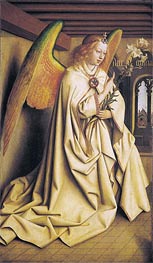
The Angel Gabriel passes the Message to Maria ... 1432
Oil Painting
$2773
$2773
Canvas Print
$54.62
$54.62
SKU: EJV-7865
Jan van Eyck
Original Size: unknown
Saint Bavo Cathedral, Ghent, Belgium
Jan van Eyck
Original Size: unknown
Saint Bavo Cathedral, Ghent, Belgium
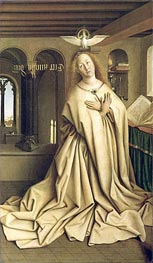
Virgin Annunciate (The Ghent Altarpiece) 1432
Oil Painting
$3011
$3011
Canvas Print
$54.62
$54.62
SKU: EJV-7866
Jan van Eyck
Original Size: unknown
Saint Bavo Cathedral, Ghent, Belgium
Jan van Eyck
Original Size: unknown
Saint Bavo Cathedral, Ghent, Belgium

John the Baptist (The Ghent Altarpiece) 1432
Oil Painting
$1899
$1899
Canvas Print
$54.62
$54.62
SKU: EJV-7867
Jan van Eyck
Original Size: unknown
Saint Bavo Cathedral, Ghent, Belgium
Jan van Eyck
Original Size: unknown
Saint Bavo Cathedral, Ghent, Belgium

The Apostle John (The Ghent Altarpiece) 1432
Oil Painting
$1874
$1874
Canvas Print
$54.62
$54.62
SKU: EJV-7868
Jan van Eyck
Original Size: unknown
Saint Bavo Cathedral, Ghent, Belgium
Jan van Eyck
Original Size: unknown
Saint Bavo Cathedral, Ghent, Belgium

Judocus Vyd (The Ghent Altarpiece) 1432
Oil Painting
$2253
$2253
Canvas Print
$54.62
$54.62
SKU: EJV-7869
Jan van Eyck
Original Size: unknown
Saint Bavo Cathedral, Ghent, Belgium
Jan van Eyck
Original Size: unknown
Saint Bavo Cathedral, Ghent, Belgium

Lysbette Borluut (The Ghent Altarpiece) 1432
Oil Painting
$2289
$2289
Canvas Print
$54.62
$54.62
SKU: EJV-7870
Jan van Eyck
Original Size: unknown
Saint Bavo Cathedral, Ghent, Belgium
Jan van Eyck
Original Size: unknown
Saint Bavo Cathedral, Ghent, Belgium

The Crucifixion n.d.
Canvas Print
$54.62
$54.62
SKU: EJV-7871
Jan van Eyck
Original Size: 46 x 31 cm
Galleria G. Franchetti alla Ca' d'Oro, Venice, Italy
Jan van Eyck
Original Size: 46 x 31 cm
Galleria G. Franchetti alla Ca' d'Oro, Venice, Italy
Adam (The Ghent Altarpiece) 1432
Oil Painting
$1926
$1926
Canvas Print
$54.62
$54.62
SKU: EJV-15726
Jan van Eyck
Original Size: unknown
Saint Bavo Cathedral, Ghent, Belgium
Jan van Eyck
Original Size: unknown
Saint Bavo Cathedral, Ghent, Belgium
Eve (The Ghent Altarpiece) 1432
Oil Painting
$1943
$1943
Canvas Print
$54.62
$54.62
SKU: EJV-15727
Jan van Eyck
Original Size: unknown
Saint Bavo Cathedral, Ghent, Belgium
Jan van Eyck
Original Size: unknown
Saint Bavo Cathedral, Ghent, Belgium

Jan de Leeuw, Goldsmith 1436
Oil Painting
$1635
$1635
Canvas Print
$54.62
$54.62
SKU: EJV-15728
Jan van Eyck
Original Size: 24.6 x 19.2 cm
Kunsthistorisches Museum, Vienna, Austria
Jan van Eyck
Original Size: 24.6 x 19.2 cm
Kunsthistorisches Museum, Vienna, Austria

Gonella (The Court Dwarf of the Dukes of Ferrara) n.d.
Oil Painting
$1757
$1757
Canvas Print
$54.62
$54.62
SKU: EJV-15729
Jan van Eyck
Original Size: 36 x 24 cm
Kunsthistorisches Museum, Vienna, Austria
Jan van Eyck
Original Size: 36 x 24 cm
Kunsthistorisches Museum, Vienna, Austria
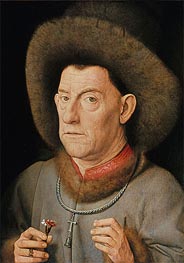
Man with Pinks n.d.
Oil Painting
$1877
$1877
Canvas Print
$54.62
$54.62
SKU: EJV-15730
Jan van Eyck
Original Size: 41.5 x 31.5 cm
Gemaldegalerie, Berlin, Germany
Jan van Eyck
Original Size: 41.5 x 31.5 cm
Gemaldegalerie, Berlin, Germany
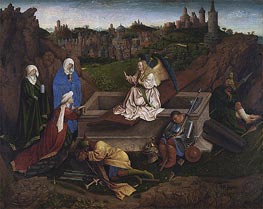
The Three Marys at the Tomb c.1425/35
Oil Painting
$3644
$3644
Canvas Print
$65.62
$65.62
SKU: EJV-15731
Jan van Eyck
Original Size: 71.5 x 90 cm
Museum Boijmans Van Beuningen, Rotterdam, Netherlands
Jan van Eyck
Original Size: 71.5 x 90 cm
Museum Boijmans Van Beuningen, Rotterdam, Netherlands
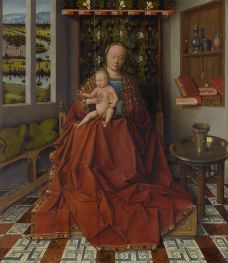
Virgin and Child in an Interior c.1450
Oil Painting
$3863
$3863
Canvas Print
$71.80
$71.80
SKU: EJV-19793
Jan van Eyck
Original Size: 59 x 51 cm
Groeninge Museum, Bruges, Belgium
Jan van Eyck
Original Size: 59 x 51 cm
Groeninge Museum, Bruges, Belgium